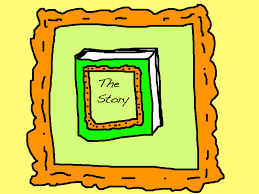accompanying his sending of paintings including the famous "Manne" - Nicolas Poussin added this express recommendation to his protector
Chantelou: "When you have received yours, I
beg you, if you find it good, to adorn it with a
little care, because he needs it so that, considering it in
all its parts, the rays of the eye are retained and not
scattered ". He enjoined, in short, to give them a frame. It is
to this golden element that was - and often still is - devalued the inestimable function of drawing the line between the inside of the painting and its outside (the "inside" of its recipient) drawing the line between what is art and what is not.
This frame story is now played in a field
enlarged to the same monument that houses works,
preserve, preserve and show them all at once. At the museum is
recognized the power to circumscribe a perimeter of culture,
cut in the urban context. Admitting implickement
the utopia of some past experiences to export
works in the street, the museum surrounds itself with a
approach to enable us to clear the view ... of rete-
in turn the "rays of the collective eye" that is the communi-
Community. The emergence of the pyramid including Jean-Claude Sergent
tells the story here, thus publicly giving the signal of a
realization, that of the Grand Louvre, destined to endow the most famous of the French artistic patrimony of a prestigious écrui.
Exceptional fact in the eventful history of this place
Paris, the redevelopment program proposes to
comdder the uistitutional and cultural framework that is the museum of
Louvre with the historic and political setting that is the palace of the
Louvre. For the first time, one marries the forms of the
and, in doing so, retrospectively rewriting the story; she is
seen as the recovery of unduly occupied premises, at a vacuum cleaning sone. After the departure of all non-museum elements, the Grand Louvre will then proclaim the accompaniment of a historic movement,
so that its finish, promised for the year 2000, will complete a
general museification of the place.
In this movement towards the totality, the project of the Great
Louvre certainly offers positive aspects that hold
both in search of coherence, in the availability of vast
additional spaces, than to the new possibilities of a
museography adapted to the developments of the capacity
Home. But to this future "masterpiece" is posed again
the question of a framework, a transition zone
with the space of the city.
This intermediate place located in the basement between the car park of
avenue Lemonnier and the entrance (proper of the museum;
has been panicked by those already nicknamed
"Temple merchants": restaurants, self-service regio-
shops, kiosks and other forms
reDroductions. It delays all the visitor's access to the
Museum. This "duty-free cultural shop" destined to be a space
of transit, is it not likely to constitute a definitive halt
tourists definitely separated from specialists? The
window shopping and gastronomy do not cease to become
an obstacle course instead of an initiatory itinerary?
This would make the basement of the Louvre a space my too
of life, a buffer frame, absorbing in advance the dazzling
sometimes because of the presence of art.

This user is on the @buildawhale blacklist for one or more of the following reasons: